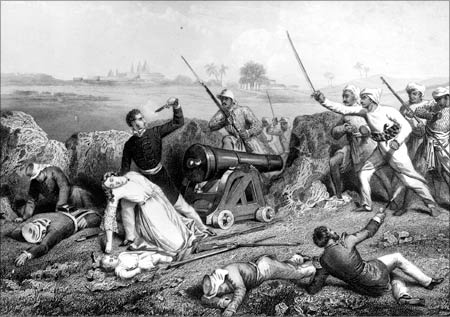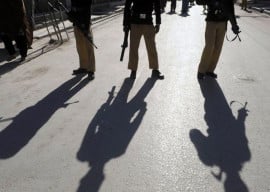
"The site where the Empress Market was built in 1889 was the parade ground of an army regiment," said author Gul Hassan Kalmati, adding "Around 22 freedom fighters were killed in the ground between September 17 and September 23 in 1857."
Exploring Pakistan: History lessons by Hamida Khuhro
He was speaking at the talk organised by the Irtiqa Institute for Social Sciences to commemorate the freedom fighters of the 1857 war. After the talk, the participants were taken to Empress Market where the institute had organised a vigil.
Talking about the incidents of the 1857 war and the role of soldiers from Karachi, he said that it is sad to see that our children are not taught about the sacrifices of military officers from Karachi, Sukkur, Hyderabad, Thatta, Jacobabad and other cities.
The British did not take over India all of a sudden, but slowly and gradually they increased their trade and ended up controlling the whole country, he said. However, the Hindus and Muslims of pre-partition later realised that they had been made slaves of the English, he added.
The army men from India became agitated when all the areas in which the British had a strong hold were declared as 'British India', he explained.
However, the igniting point of the rebellion was when Muslim and Hindu officers were asked to use cartridges [of Enfield rifles] which were made using cow and pig fat, he said. This insulted religious sentiments of both the Hindus and Muslims.
Initially, after consulting with all the Indian soldiers at the regiments, it was decided that they will stand against the British army on May 31, 1857, but one sepoy, Mangal Pandey, declared it on May 10, which led to confusion among the supporters of the war. This was also one of the reasons why the rebellion failed, he explained. "Pandey was right in his stance as he knew that British knew that the soldiers were planning to [rebel] against them," the author added.
Remembering the struggle for women’s rights
Reading out some excerpts from his book, which is written with reference from the British Library archives, Kalmati said it was 10:30pm on September 13, 1857, when two soldiers came to their commanding officer, Major Macgregor, and informed him that the soldiers will launch a rebellion against them at 2am. The entire planning was headed by two soldiers, Ramdin Pandey and Sooraj Bali Tevari, who were in contact with soldiers in Delhi. Major Macgrigor immediately informed Sindh commissioner Bartle Frere, Captain Goldsmith and John Arthur about the plan and a curfew was imposed in all the regiments.
Ramdin and Tevari decided their contingency plan and Ramdin fled with 21 of the total 44 soldiers who were supporting them while the rest stayed back with Tevari.
From the 21 soldiers who fled, three were arrested from Mithadar and were cut into pieces and thrown in the sea while the other 15 were arrested on May 16, of which 11 were hanged to death [at Empress Market] and cut into pieces and thrown in the Sadar nullah near Burns Road.
Ramdin was arrested from Ahmed Khan Gabol Goth and was blasted into pieces after tying him and four of his accomplices in front of cannons.
The soldiers arrested from regiments were sent to Andaman and Nicobar Islands to serve their sentences.
The Empress Market was built just to ensure that people visiting the place do not pay homage to the soldiers.
"It was just made so that the people do not make any mausoleum for them [freedom fighters]," Kalmati said, adding that, "We are never told about these sacrifices in schools".
Published in The Express Tribune, September 27th, 2016.

















COMMENTS (2)
Comments are moderated and generally will be posted if they are on-topic and not abusive.
For more information, please see our Comments FAQ